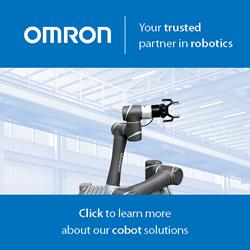Neurotechnology Introduces SentiSculpt SDK for Development of 3D Models Using Standard 2D Images
The SentiSculpt algorithm turns standard 2D still images of an object into 3D models for use in 3D printing, design, architectural modeling and game development.
VILNIUS, Lithuania, Feb. 23, 2015 -- Neurotechnology, a provider of high-precision biometric, robotics, AI and computer vision technologies, today introduced the SentiSculpt Software Development Kit (SDK) for the creation of 3D object models. With the broad availability of 3D printers and software for virtual reality, gaming, architecture and design applications, one of the biggest challenges has been the capture of 3D objects. This has either required expensive, specialized photographic equipment or the drawing of complex object meshes and wireframes. SentiSculpt SDK offers an alternative: the capture of real objects in 3D using off-the-shelf cameras or smartphones. SentiSculpt uses an advanced algorithm to turn a series of 2D photos into a 3D object model that can be used for 3D printing or in a variety of software applications. SentiSculpt SDK enables developers, designers, animators and integrators to easily incorporate 3D technology into their designs, software, games and other solutions that require realistic, virtual environments.
"SentiSculpt brings users a higher visual experience - instead of looking through a series of static, 2D images people can navigate around objects within a 3D environment," said Dr. Vilius Matiukas, SentiSculpt project lead for Neurotechnology. "It is an excellent opportunity for sculptors to present their work, even make virtual galleries. And for application developers, all of this can be easily integrated in to their own projects with only a few lines of the code," Matiukas added.
With SentiSculpt, the user takes pictures of an object to capture the different surfaces or views (the object may be anything from a small toy to a large building, a honeybee to an aircraft carrier). SentiSculpt begins by creating a point cloud based on the input images (2-5 megapixels is the optimal resolution for photos). SentiSculpt can then be used to generate meshes, or wireframes, from the point clouds. It can also perform texture mapping and detect the relative camera position for each photo.
SentiSculpt SDK supports C, C++ and C# development environments under the 64bit Windows platform. The SDK also includes a sample that demonstrates how plugins can be created for MeshLab, a well-known open source system for the processing and editing of unstructured 3D triangular meshes.
SentiSculpt SDK is the latest offering in Neurotechnology's "Senti" line of AI and robotics products, including the SentiBotics mobile robotics development kit and SentiSight SDK for development of computer and robotic vision applications.
SentiSculpt SDK and the entire line of Neurotechnology products for AI, robotics, object recognition and biometric identification are available through Neurotechnology or from distributors worldwide. For more information, go to: www.neurotechnology.com.
About Neurotechnology
Neurotechnology is a provider of high-precision software development products for AI, robotics, object recognition and biometric fingerprint, face, iris, palmprint and voice identification. More than 2500 system integrators, security companies and hardware providers integrate Neurotechnology's algorithms into their products, with millions of customer installations worldwide.
Drawing from years of academic research in the fields of neuroinformatics, image processing and pattern recognition, Neurotechnology was founded in 1990 in Vilnius, Lithuania and released its first fingerprint identification system in 1991. Since that time the company has released more than 80 products and version upgrades for identification and verification of objects and personal identity.
Featured Product

